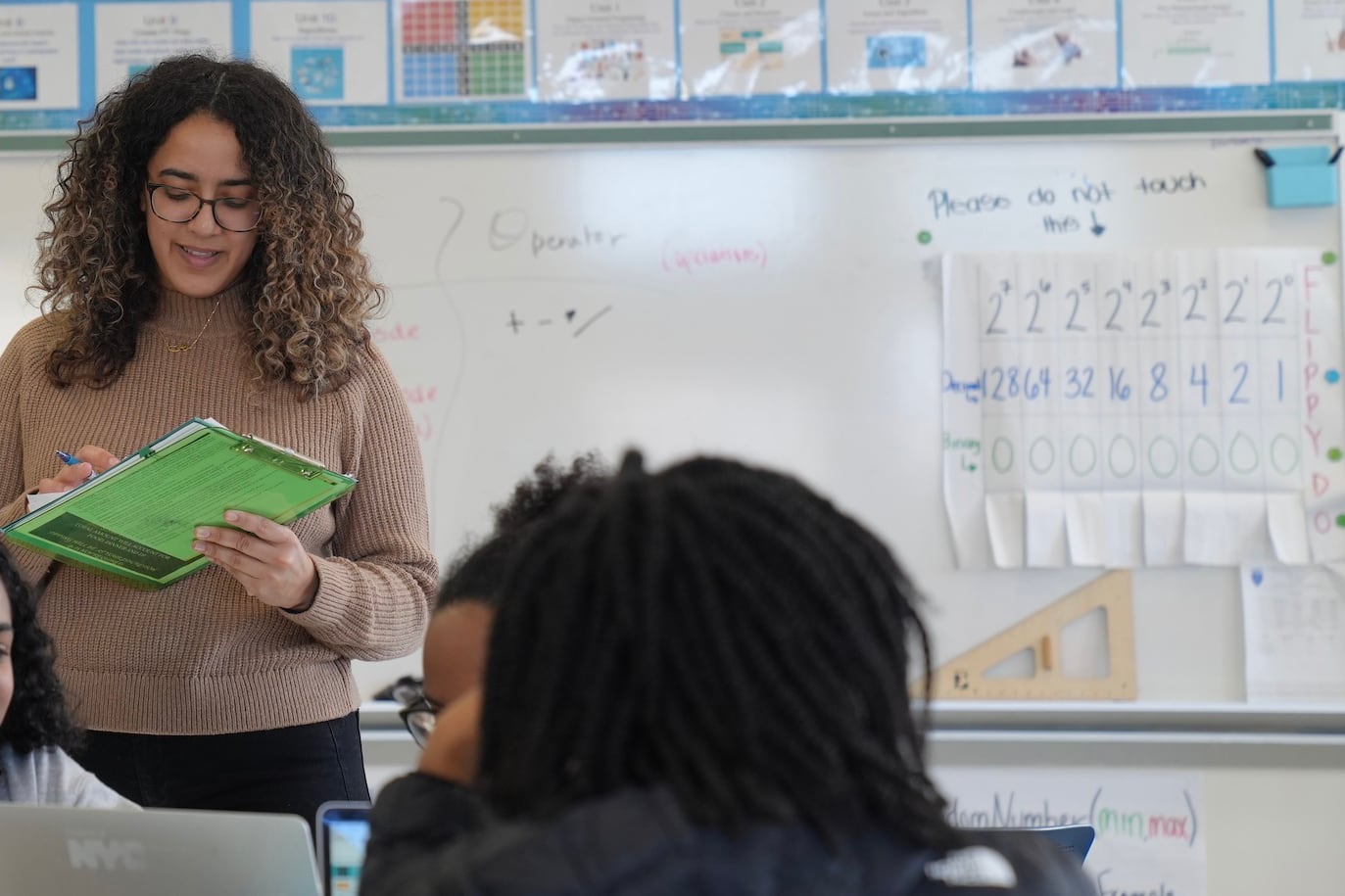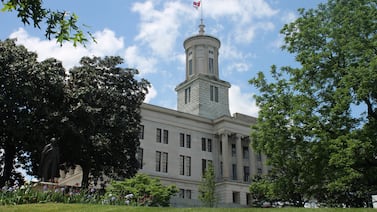About two years after Maha Hasen started teaching math at a Bronx arts high school, a few students urged her to create a computer science track. So she took it upon herself to learn the subject.
She did a fellowship with Upperline Code, which trains educators committed to expanding access to computer science, and was able to re-introduce AP Computer Science principles at Fordham High School for the Arts. Hasen also launched a coding club where students learned to create websites using HTML, CSS, and JavaScript.
Now in her eighth year at the school where she started her teaching career, Hasen became an assistant principal while still teaching a few courses. Her school now has a four-year computer science track that includes work-based learning experiences through the Education Department’s FutureReadyNYC program.
And Hasen strives to increase the number of girls pursuing computer science, even collaborating with a dance teacher to combine step and coding. Girls make up more than 70% of students at her arts-focused school.
“My students are dedicated, vocal, and innovative changemakers that hope to use their skills in computer science to dismantle the belief that women do not belong in computer science and to truly change their communities for the better using their skills from the class,” said Hasen, who has won several accolades, including a 2023 Big Apple Teaching Award and Cognizant Innovation in Computer Science Award in 2022.
Besides being part of the second wave of schools in the FutureReadyNYC program, Hasen’s school was selected this year to join the city’s Career Readiness & Modern Youth Apprenticeship program. Through that, students can get paid apprenticeships with technology companies and take coursework at New York University in pursuit of an associate degree.
These programs, Hasen said, help “ensure that we go beyond a traditional high school experience.”
This interview has been lightly edited for length and clarity.
How and when did you decide to become a teacher?
The short answer: I didn’t! As an applied mathematics and philosophy major, I had originally intended to become a Professor of Philosophy.
However, I had volunteered and worked at a number of schools in Washington, D.C., as a tutor, Ethics Bowl coach, site associate, and teacher, and I interned at the Center for Education Reform, so when my advisor recommended that I look into Teach for America, it made a lot of sense!
I was thrilled to join Teach for America and to be placed in the Bronx, as I was born and raised in the Bronx.
However, what is even more important than why I decided to become a teacher is why I decided to stay a teacher.
Of course, the cliché (and true!) answer is that the students are why I stayed, but after years of reflection, I have found that the most important factor to me staying in the profession has been that I have an incredible principal, Michael Johnson Jr., who has truly embodied the meaning of transformational leadership. Only through his leadership have I been able to take the intellectual risks and develop into the educator that I am now.
I believe an often overlooked factor in teacher development is who is actually supporting the development of teachers — and for me, I am fortunate to have a mentor/principal who consistently gives effective feedback and coaching to support my development.
Why did you decide to take the leap and become an assistant principal?
I wanted to take on a more formal role with the science and math department at my school. I love working with teachers and giving them feedback, and through my role as Master Teacher, I was able to work closely with many teachers and support them in their development.
However, I consistently found myself interested in taking on more administrative projects, and my principal had pushed me to pursue the role of assistant principal.
It was very important to me in the transition to continue to teach. As such, I still teach two sections of AP Computer Science Principles, and once a week, I teach an Algebra II Prep class. I believe that being able to teach these classes allows me to leverage my room as a lab classroom and to really practice what I preach to teachers. Overall, I’ve loved the transition!
What’s your favorite lesson to teach and why?
I love facilitating student learning as they complete their final app in AP Computer Science Principles.
While this culminating project leads to a lot of frustration from students, it is incredible to see how students create apps that tie in their identity and serve the purpose of helping their peers.
Additionally, it is incredible to watch as students work their way out of their comfort zones and navigate through the challenges and frustrations of coding to develop their apps by collaborating and using each other as resources.
Last year, students created a song recommendation app, an app to help learn [American Sign Language], and one that helps you learn about African American inventors and scientists.
I saw that you collaborated with a dance teacher on a freshman coding and dance course aimed at girls. Can you tell me more about that class and why you decided to do that?
The whole premise of our STEM From Dance class was to train an AI to recognize dance poses and then use these dance poses to trigger animations that we can code! Students in this class leveraged the use of Google’s Teachable Machines and Scratch to code.
As a performing arts high school, it is important that we continue to look for ways to integrate the arts into the core academic classes. This was an incredible opportunity because it wasn’t just a unit activity — it was an entire class co-taught with our dance teacher that allowed students to explore computer science through dance.
Tell us about your own experience with school and how it affects your work today.
I always loved school, specifically my math classes. In college, I majored in applied mathematics and philosophy, and I think that shaped my teaching career significantly. As a philosophy major, I spent a lot of time asking questions and always focusing on learning more, sharing perspectives, and thinking outside the box.
I’ve aimed to translate that to my classroom and school by challenging the notions of traditional education. Some examples include the flipped classroom that I helped to pilot in the math classrooms in 2017 — where students watch ‘how-to’ videos at home and take assessments and do small group work in class — and the intentionality behind creating a computer science track and partnership with FutureReady.
Of course, as a math major, I am excited by math so it made sense that I started my teaching career as a math teacher! I hope that I have been able to instill that same love of mathematics and share the joy of the discipline with my students.
What’s the best advice you’ve ever received, and how have you put it into practice?
Choose to be happy! While working in education is a very challenging job, it is so much easier if you consistently make the choice to be happy.
For me, that means continuing to teach what I am passionate about, assuming the best intentions of others, and prioritizing my health to ensure I am filled with energy each day!
Amy Zimmer is the bureau chief for Chalkbeat New York. Contact Amy at azimmer@chalkbeat.org.








